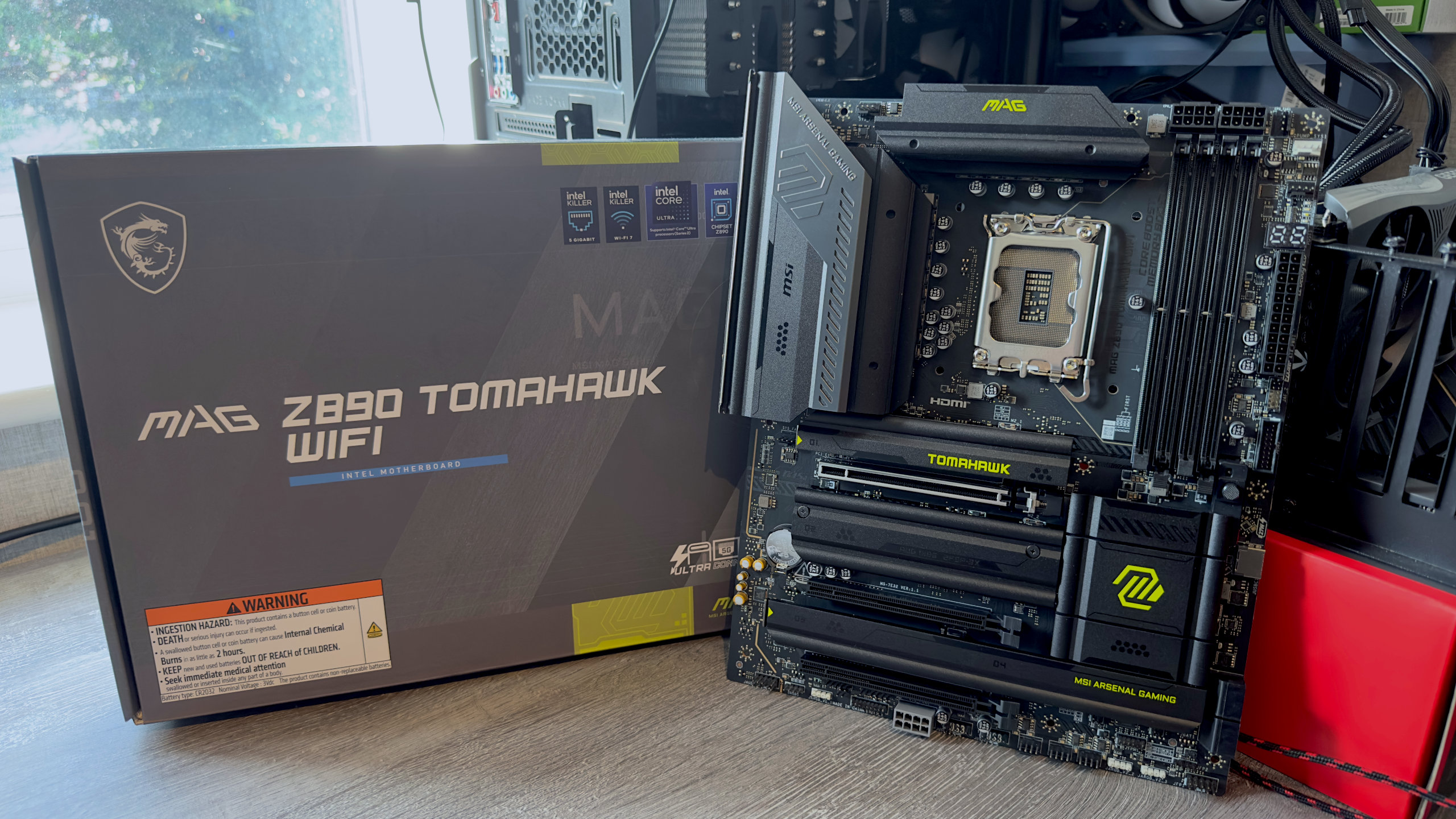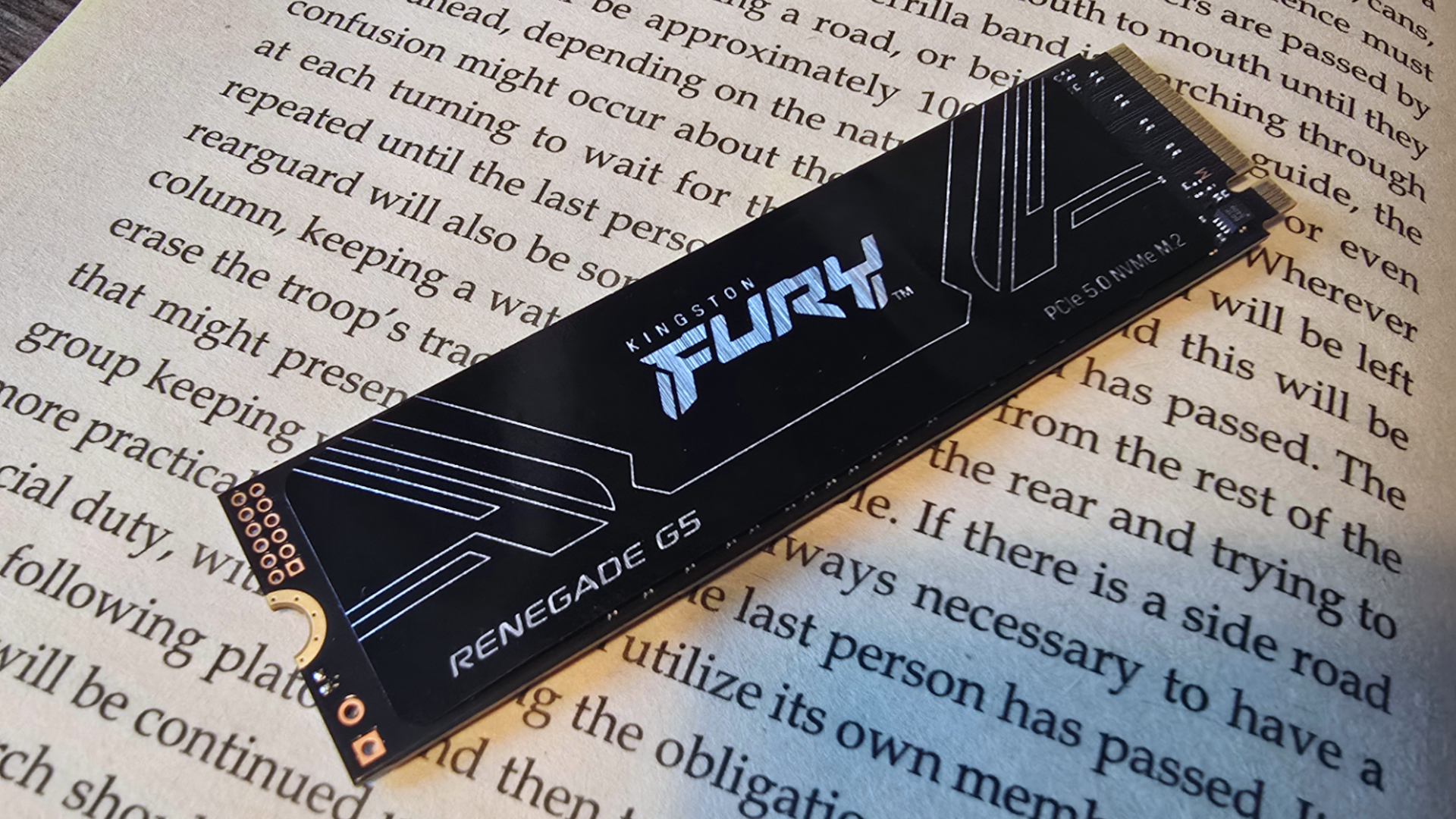Our Verdict
Packed with features and options for storage and peripheral expansion, the MSI MAG Z890 Tomahawk is a solid basis for building an Intel Core Ultra 200S rig. However, despite the competitive price, there are cheaper LGA 1851 motherboards available, so only pay more for the MSI board if you really need all those ports and slots.
For
- Dual Thunderbolt 4 ports
- Three PCIe and four M.2 slots
- Lots of user-friendly features
- Wi-Fi 7
Against
- Performance is fine, rather than great
- Not ideal for serious overclocking
PC Gamer's got your back
The MSI MAG Z890 Tomahawk WiFi has been on the market for 12 months, as it was one of the first motherboards to be released alongside Intel's Core Ultra 200S range of desktop CPUs, aka Arrow Lake, in October 2024. At the time, there were few other models to choose from, but that's considerably changed over the months, and MSI faces stiff competition at this price point.
The Z890 Tomahawk's original MSRP was $300, though you're more likely to find it around the $260 mark, and while that's not a huge reduction, it brings it more in line with boards from ASRock and Gigabyte. That's not the only thing that's changed since last year, as the performance of Arrow Lake has noticeably improved due to a wealth of microcode, BIOS, and Windows updates. In gaming, Core Ultra 200S still lag behind AMD's Ryzen 9000-series, though.
MSI's Tomahawk series of motherboards has been around since 2018, as part of its budget and mainstream selection of products, sporting the MAG (MSI Arsenal Gaming) moniker. The Z890 Tomahawk WiFi sits near the top-end of the MAG pile, partly because of its price tag, but mostly because of the comprehensive array of features it has.
That's because, as its name suggests, the Tomahawk utilises Intel's Z890 chipset, which provides the most PCIe lanes for expansion slots, storage options, and USB ports among the entire 800-series. The motherboard has three PCIe slots: one x16 Gen 5, directly connected to the CPU, and two x4 Gen 4 via the Z890 chipset.
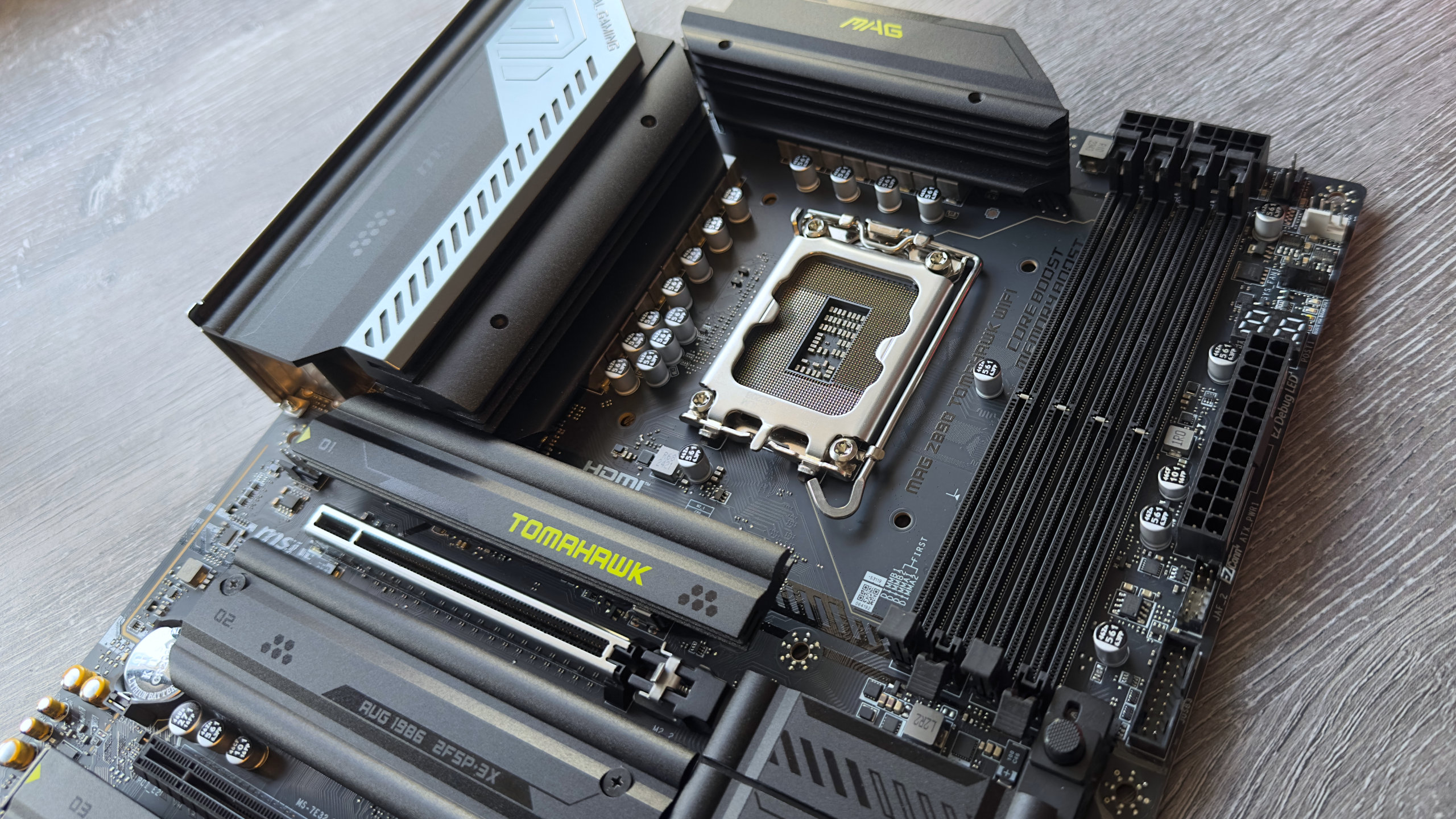
Socket: Intel LGA1851
Chipset: Intel Z890
CPU compatibility: Intel Core Ultra 200S desktop
Form factor: ATX
Memory support: DDR5-4800 to DDR5-9200+ (OC), up to 256 GB, CUDIMM supported
Storage: 4x M.2, 4x SATA
USB (rear): 2x Thunderbolt 4/USB4 Type-C 40 Gbps, 1x USB 3.2 Type-C 10 Gbps, 3x USB 3.2 Type-A 10 Gbps, 4x USB 3.0 Type-A 5 Gbps
Display: 1x HDMI 2.1, 2x DisplayPort 2.1 via Thunderbolt 4
Networking: Intel Killer E5000 5 Gbps LAN, Intel Killer BE1750x Wi-Fi 7
Audio: Realtek ALC1220P
Price: $260 / £230 / AUS$509
Alongside them, there are four M.2 slots for SSDs. The CPU controls two of them, with the primary slot being Gen 5 and the latter being Gen 4; the remaining two are both Gen 4 and controlled by the chipset. One of the best aspects of Arrow Lake and the Z890 is the fact that there are sufficient PCIe lanes to allow for all of the above to be filled and still retain full performance.
The same is true for all the Thunderbolt and USB ports on the rear IO panel. You get two of the former, and given that they support up to 40 Gbps in Thunderbolt 4 mode, 20 Gbps in USB4 mode, or 10 Gbps when operating as USB 3.2 Type-C sockets, as well as providing DisplayPort 2.1 outputs, you get a host of options just from them alone.
As for the other USB ports, there are four USB 3.2 running at 10 Gbps (three Type-A, one Type-C) and a further four USB 3.0 at 5 Gbps. Surprisingly, there are no USB 2.0 ports on the rear IO panel, but I don't think anyone can complain about having a total of ten sockets for peripherals, as that's the going rate at this price point.
Keep up to date with the most important stories and the best deals, as picked by the PC Gamer team.
Likewise, the array of user-friendly features across the motherboard is most welcome. Two of the M.2 heatsinks and the primary PCIe slot for a graphics card have quick-release mechanisms, there are buttons to clear and flash the BIOS, debug LEDs and a display to indicate what's happening during the boot process, and a Wi-Fi antenna that simply pushes into its sockets. Even the UEFI is clear and easy to use.
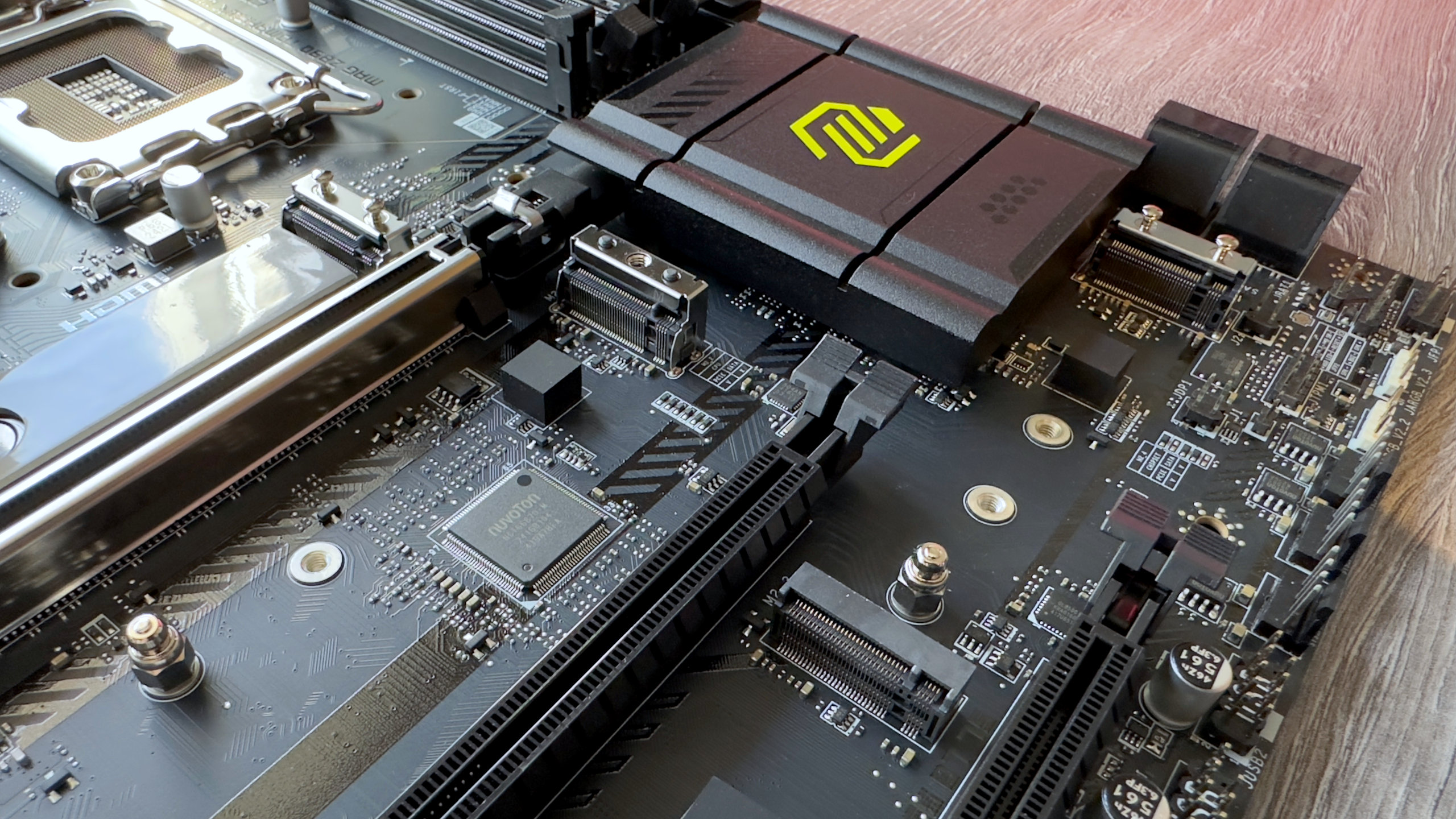
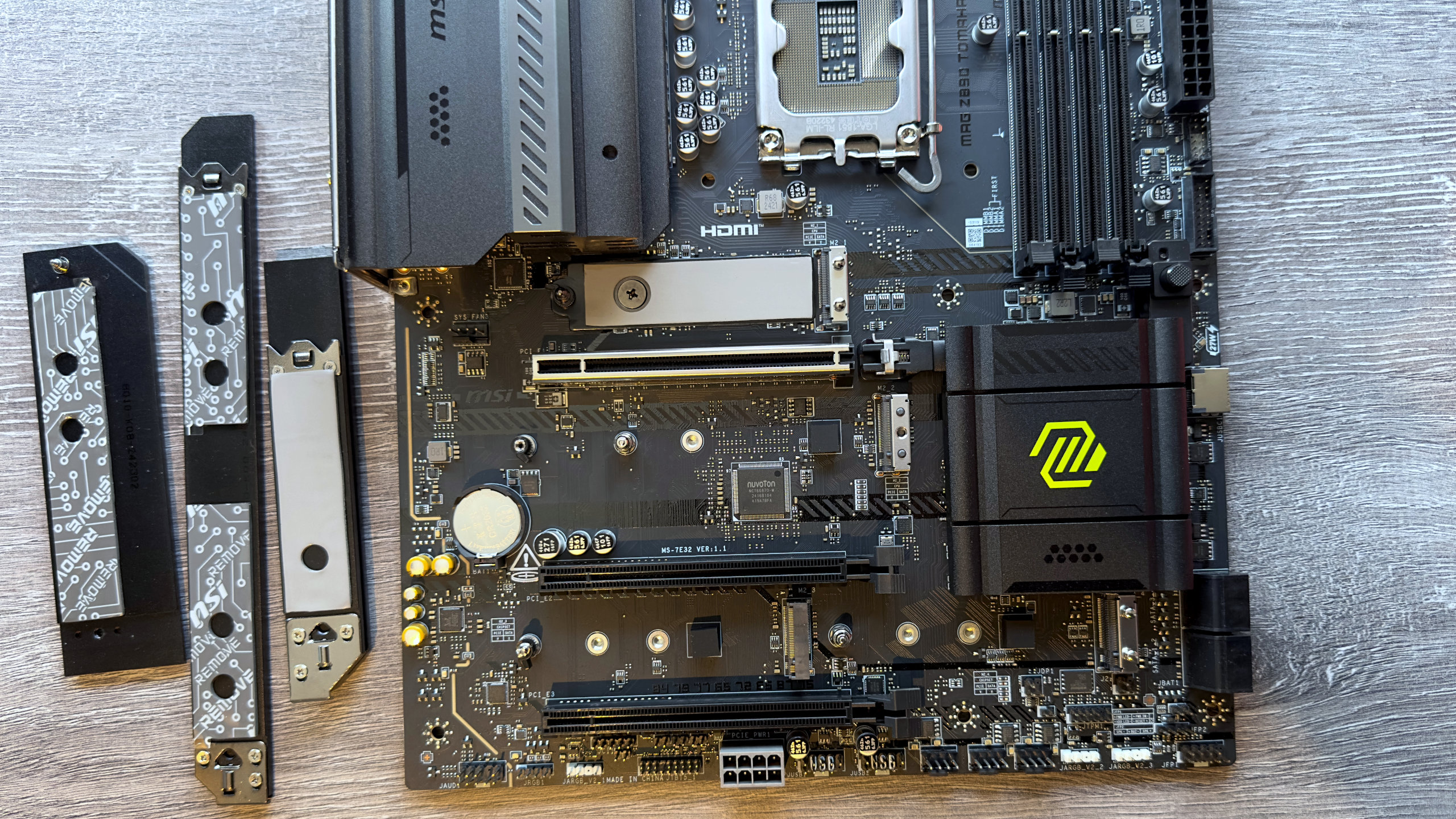
So far, so good. In fact, if all you care about is storage, expansion, and support for peripherals, then you might as well stop reading now and just head off and buy one. Before you do, though, it's worth noting that the MSI MAG Z890 Tomahawk isn't outstanding in every area.
PC Gamer test rig
CPU: Intel Core Ultra 9 285K | Cooler: Arctic Liquid Freezer III 280 AIO | RAM: 32 GB Lexar Thor OC DDR5-6000 | GPU: Zotac GeForce RTX 4070 | Storage: 2 TB Corsair MP700 | PSU: Thermaltake ToughPower PF3 1050 W | OS: Windows 11 25H2 | Chassis: Open platform | Monitor: Acer XB280HK
Given that the above motherboards in the gaming benchmark results were tested over a broad period of time, some of the discrepancies will be down to differences in BIOS, microcode, and Windows. However, the fact that MSI's board is notably slower in our Factorio test has been an issue since launch. It's better than it was, but there's no obvious reason as to why it should be so far behind the other motherboards.
That said, the overall gaming performance isn't bad; it's just very average when compared to other boards. Some are better, some are worse. It's almost certainly not helped by the peculiarities of Arrow Lake, as MSI's X870 Tomahawk for AMD processors performs just as well as any other X870 board.
It's a similar story when it comes to content creation and CPU-heavy benchmarks. In all cases, the MSI Z890 Tomahawk lags behind the other boards we've tested, but not enough to be really noticeable in real-world situations. MSI may be using conservative RAM timings to boost stability, which would go some way to explain the above results and, to a lesser extent, why it's slower in Factorio.
You might be tempted to think that you can get around all of this by simply applying a spot of overclocking to the Core Ultra 200S processor used in the motherboard. That's certainly very easy to do, as MSI's UEFI has everything logically set out and clearly labelled. However, with default settings, the Z890 Tomahawk isn't starting at the best position to overclock from.
As you can see, the Core Ultra 9 285K used for all our LGA 1851 motherboard tests is drawing the most power during the Baldur's Gate 3 benchmark on the MSI board. Not by a huge margin, but when it's already 9 W up on the Gigabyte, overclocking will only make that worse. More power means more heat, and not just for the CPU, as the VRMs will be tasked harder.
While the ASRock Z890 Taichi Lite's peak VRM temperature is almost certainly a manufacturing error, the fact that the Z890 Tomahawk runs hotter than the NZXT N7 Z890 and ASRock B860 Steel Legend doesn't bode well for serious overclocking. It doesn't cope particularly well with a first-generation PCIe 5.0 SSD, either, though newer drivers do run cooler, so if you are going to take that route with your primary storage, you should consider one of the latest Gen 5 SSDs.
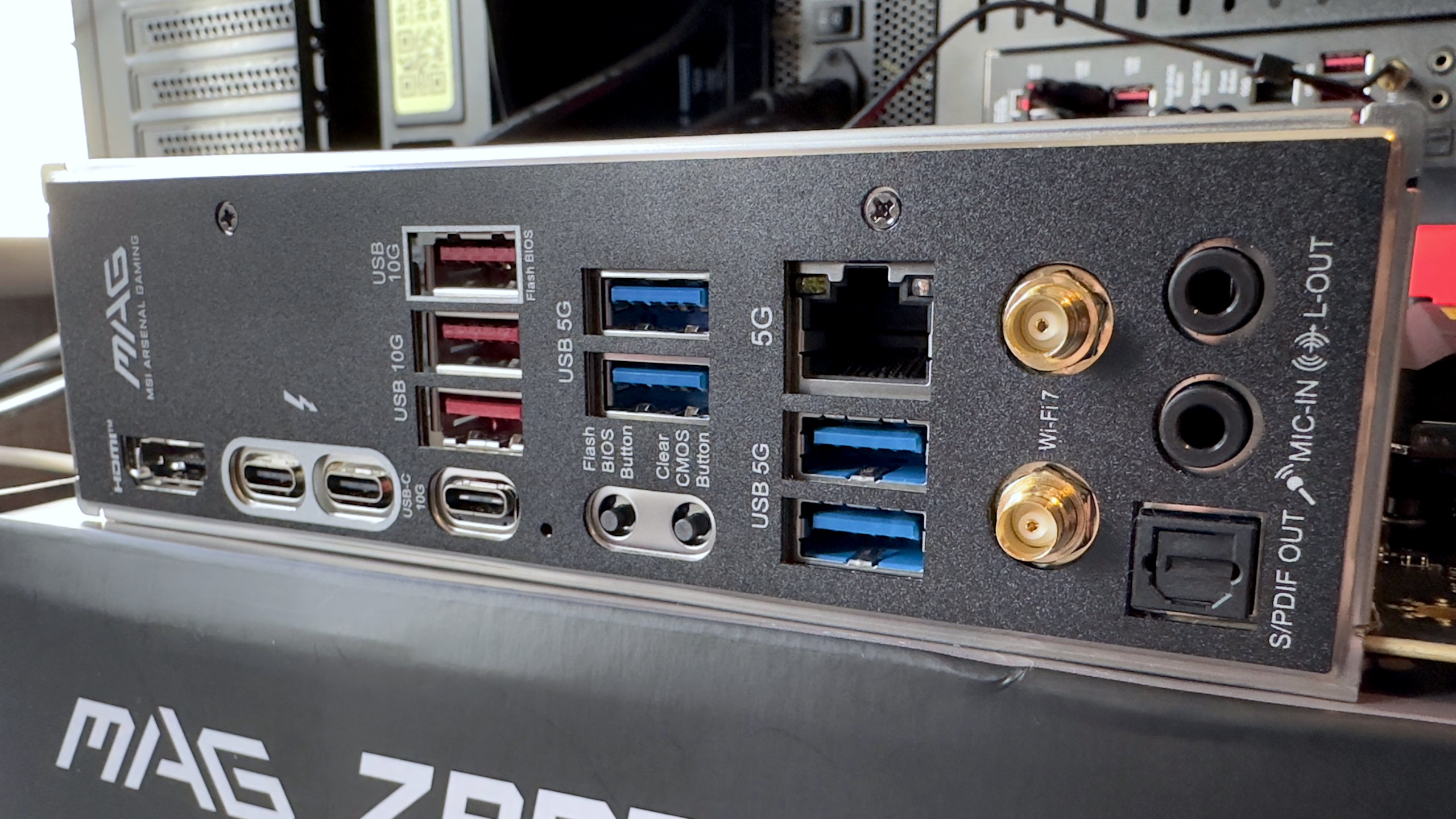
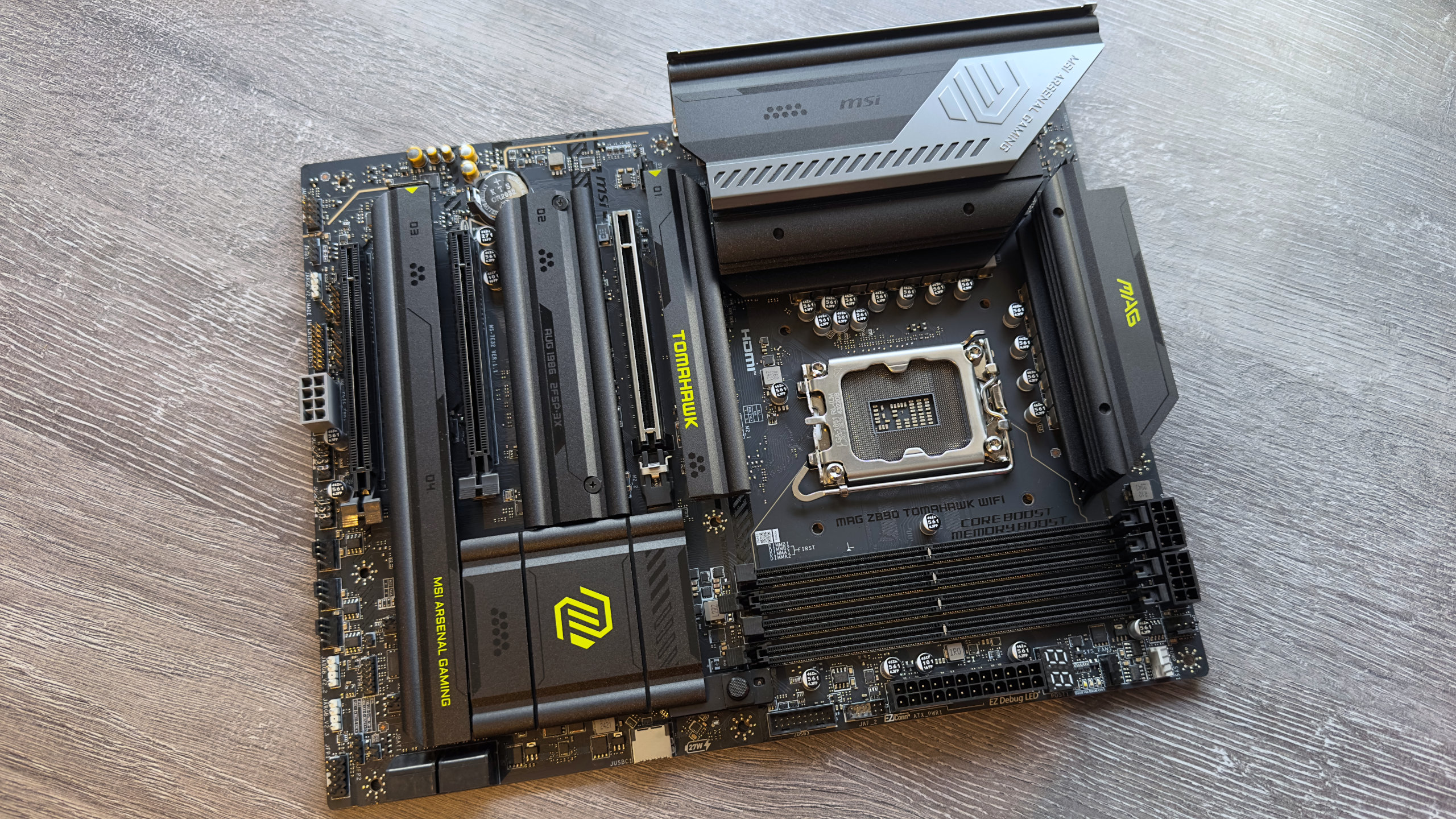
If you're looking for the best performance and thermals, regardless of budget, then the fiercesomely expensive Asus ROG Maximus Z890 Hero is untouchable. However, it's $220 more expensive than the MSI MAG Z890 Tomahawk WiFi, almost double the cost.
✅ You want a motherboard with lots of ports and expansion slots: With three PCIe and four M.2 slots, along with 10 rear USB and four SATA ports, the MSI Z890 Tomahawk can be loaded to the hilt with storage and peripherals.
❌ You're building a budget Arrow Lake gaming PC: There are cheaper Core Ultra 200S motherboards than the MSI Z890 Tomahawk, and many perform just as well when it comes to gaming.
That doesn't mean it's the best Z890 motherboard out there, of course. If money is no object, then the Maximus easily wins, and where budget is important, ASRock's B860 Steel Legend WiFi can be picked up for as little as $160 at Amazon. The latter doesn't support Wi-Fi 7, though, and it has fewer Thunderbolt and USB ports than the MSI model.
Taking everything into consideration, the MSI MAG Z890 Tomahawk WiFi stands out as being a solid proposition: It has connectivity and expansion options that wouldn't look out of place on high-end motherboards, yet it sports a competitive, mainstream price. You don't get the best performance, unfortunately, but it's not so slow that you'd have any reason to be concerned.
Had I reviewed this motherboard back in October 2024, the conclusion wouldn't have been anywhere near as positive, but sometimes it really does pay to be late to the party.
Packed with features and options for storage and peripheral expansion, the MSI MAG Z890 Tomahawk is a solid basis for building an Intel Core Ultra 200S rig. However, despite the competitive price, there are cheaper LGA 1851 motherboards available, so only pay more for the MSI board if you really need all those ports and slots.

Nick, gaming, and computers all first met in the early 1980s. After leaving university, he became a physics and IT teacher and started writing about tech in the late 1990s. That resulted in him working with MadOnion to write the help files for 3DMark and PCMark. After a short stint working at Beyond3D.com, Nick joined Futuremark (MadOnion rebranded) full-time, as editor-in-chief for its PC gaming section, YouGamers. After the site shutdown, he became an engineering and computing lecturer for many years, but missed the writing bug. Cue four years at TechSpot.com covering everything and anything to do with tech and PCs. He freely admits to being far too obsessed with GPUs and open-world grindy RPGs, but who isn't these days?
You must confirm your public display name before commenting
Please logout and then login again, you will then be prompted to enter your display name.
